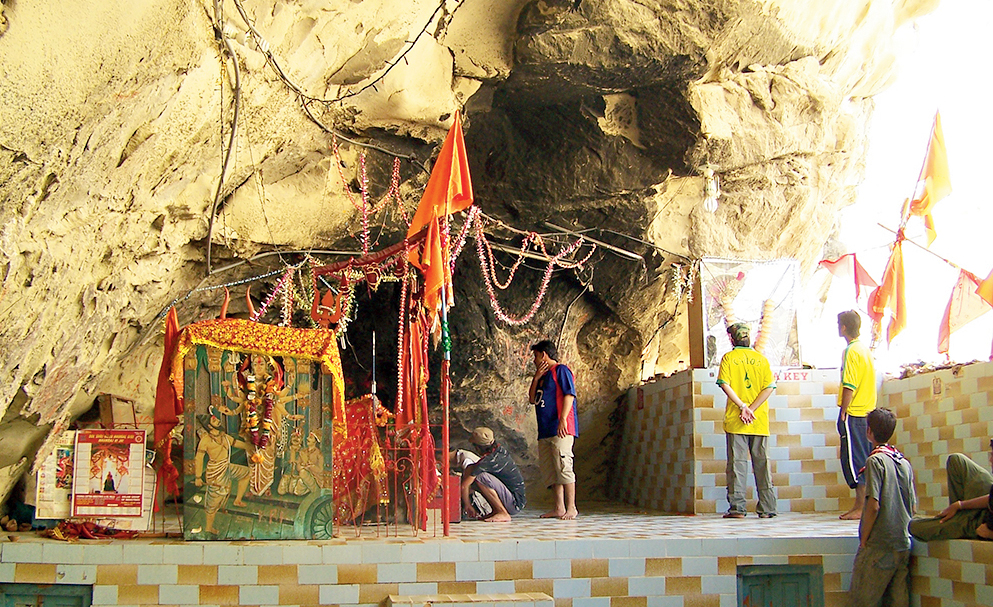When Sufism and the lore of Sita and Sati converge, narratives like this novel’s are born. This is even more significant when the convergence reaches beyond the Gangetic plain across borders into Balochistan and Sindh. Annie Ali Khan’s account of her journeys to shrines in two provinces of Pakistan can be read as a metaphorical pilgrim’s progress that juxtaposes deity and devotee, preaching and practice, ritual and mythology. Khan takes her inspiration from Qurratulain Hyder, whose Aag ka Dariya and Sita Haran are informed by syncretism while foregrounding the tumultuous trajectories of South Asia’s civilization. Sita under the Crescent Moon underlines the syncretic spirit that marks the ambience of places of pilgrimage especially popular among women devotees.
Khan focuses on this feature, now lost in the sands of time and strident post-1947 political rhetoric. She travels to the Durga temple where a Durga-Sati myth is kept alive by jogis. The shrines of Gaji Shah and Shah Noorani are only frequented by women who make offerings of milk and eggs to Naag Baba. The court of Miran Pir boasts of a Shiva lingam and celebrates Sati Bibi from Rajasthan’s Ratanpur. Godar Shah’s shrine sees women shedding their worn clothes to don new attire symbolizing a new dawn while Lotan Shah is remembered as the saint who sheltered women. The shrines of Mai Mithi, Shungla Devi, Rama Pir and the Umerkot Shiva temple all celebrate Durga; the latter even has a statuette of Durga alongside that of Shiva.
Myth suggests that somewhere in the harsh terrain of Sindh and Balochistan, Sita was gathered into the arms of Mother Earth after having endured the ordeal of life. Interestingly, each shrine Khan visits has a multitude of women gathered within the shrine’s ambience of solace. These are the modern-day sisters of Sita who seek spiritual, mental and physical recovery through the intervention of the shrines’ deities and saints after life’s ordeals. Their stories are personal testimonies that reflect their hope in the future in spite of the anguish of their past. At the core of their tales lie the trials as well as the joys of womanhood.
Myths rely on the fantastic to bring out the real, and this is what is striking here. Whether in a trance or a dream, as recollection or testimony, the women’s tales that Khan weaves into the myths of the shrines bring out the realities of the lives of non-privileged women in Pakistan today. Their accounts map out, in a very nuanced fashion, their status as illiterate, underprivileged and dependent citizens. This is even more forcefully underlined when the author, as a representative of the privileged class, writes of her personal life that is in stark contrast to the women’s accounts.
Sita under the Crescent Moon is a fascinating blend of hagiography, biography, autobiography and history. The narrative incorporates the tales of the shrines’ deities and saints, the devotees’ stories, Khan’s memories, and also the socio-political landscape of a nation marked by military rule, violent politics, terrorism and insurgency. An account of ordinary peoples’ history and cultural heritage, Khan’s text underlines the tragedy of South Asia where the politician divides and distances, but a shared cultural geography unites and transcends borders.
One associates rigorous copy editing with a publisher like Simon & Schuster but it was disappointing to find typographical errors (“Ithad”), spelling mistakes (“occassions”), and grammatical slips (“built by U.S. aid”) that detracted from an otherwise engrossing read.
Sita under the Crescent Moon: A Woman’s Search for Faith in Pakistan By Annie Ali Khan, Simon & Schuster, Rs 599










